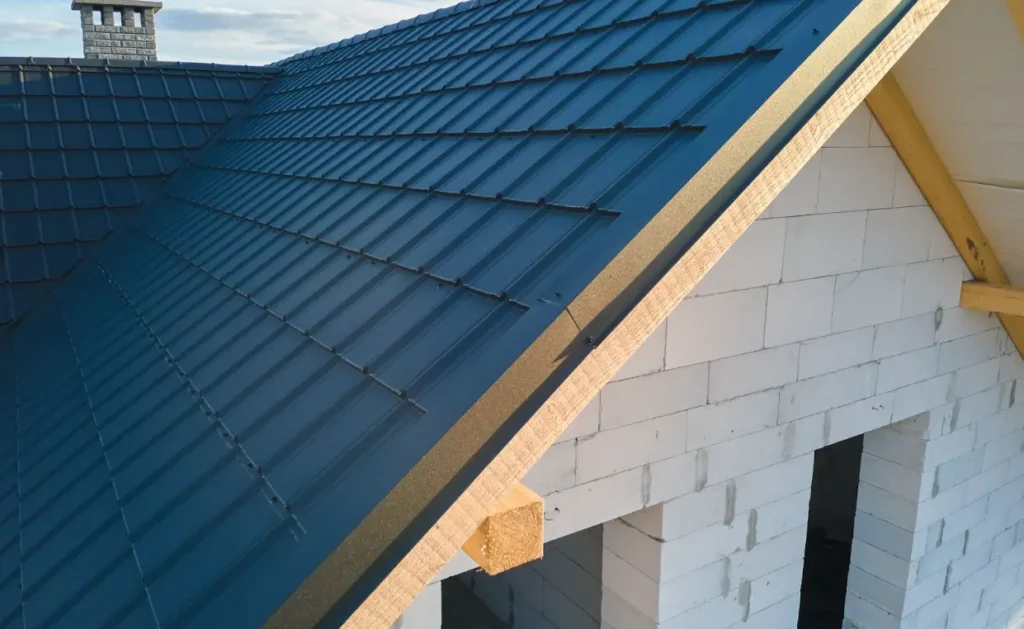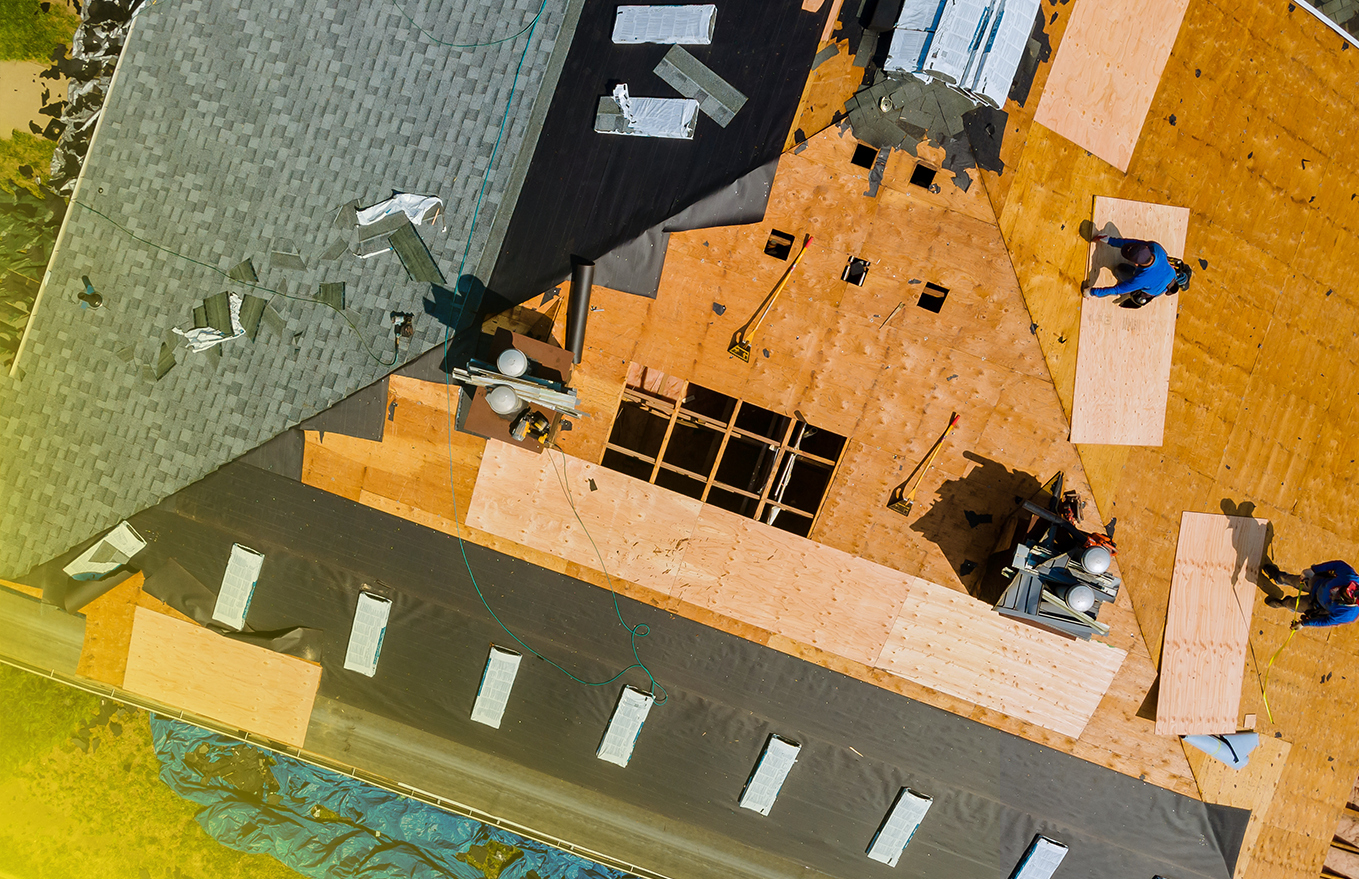Homeowners eventually face a decision they can’t keep pushing aside: to replace an aging roof or keep patching it up. Leaks spread, energy bills climb, and resale value dips the longer it’s delayed. More people are turning to metal roofing because it lasts longer, resists weather, and adds a sleek look. Still, selecting the correct type of metal can be overwhelming, especially with the numerous materials available on the market. The best choice depends on where you live, the appearance of your home, and how much you’re willing to invest.
Common Types of Metal Roofing Materials for Homes
Metal roofing isn’t limited to a single material or style. Homeowners can choose from a range of metals, each offering unique strengths, price points, and aesthetics. Choosing the right one often depends on your local climate, budget, and how you want the home to look from the curb. The following are the top roofing choices, along with their key differences:
Steel Roofing
Steel is a go-to choice for many homeowners because it’s affordable, strong, and works in most climates. It’s available in both panel and shingle forms, and it withstands impacts well. However, it does need protective coatings to prevent rust. Common types include galvanized, Galvalume, and weathering steel. It’s a solid mid-range option that can be painted in a variety of colors, making it a fit for both modern and traditional styles.
Aluminum Roofing
Aluminum naturally resists rust, making it ideal for coastal or humid areas. It’s lightweight, easy to install, and reflects heat well, which helps cut cooling costs. Though more expensive than steel, it requires less maintenance over time. Its soft surface can dent more easily, but it performs well in wet, salty, or tropical climates.
Copper Roofing
Copper is one of the most premium roofing options out there. It’s maintenance-free, can last over 100 years, and develops a patina that changes color over time from bright brown to green. It’s also the most expensive, both in terms of materials and labor, but it shines on historic homes and upscale builds where looks and longevity are paramount.
Zinc Roofing
Zinc is popular among eco-conscious homeowners for its recyclability and long lifespan, which can last up to 100 years. It features a sleek matte finish and is resistant to corrosion in cold or wet climates. Zinc also self-heals minor scratches, but it’s pricey and needs skilled installation. The upfront cost is high, but the long-term benefits are substantial.
Tin Roofing (Often Misunderstood)
True tin roofs are rare today. When people say “tin,” they usually mean painted steel or aluminum. Historically, tin was used on barns and old buildings. It’s now mainly used for restoration or retro designs. It’s hard to find, expensive for what it offers, and doesn’t match the durability of other metals; however, it has niche appeal for those seeking a rustic look.

Key Strengths of Each Metal Roofing Material Type
Each metal comes with a unique blend of benefits and trade-offs. Understanding these differences helps homeowners plan more confidently and avoid costly mistakes. It’s how the roof performs, looks, and holds up in your location, not just about price.
Lifespan and Maintenance Needs
The lifespan of a metal roof and the amount of upkeep required depend on the material. Copper and zinc lead the pack, lasting 80 to 100 years or more with very little maintenance. Aluminum has a lifespan of approximately 40 to 50 years and is naturally resistant to rust, which reduces maintenance needs. Steel can last 30 to 50 years, but only if its protective coatings are maintained. Tin lasts 30 to 40 years and requires regular maintenance to remain in good condition. Overall, copper and aluminum are the lowest-maintenance choices.
Weather Resistance and Climate Suitability
Not all metals handle the elements the same way. Aluminum performs best in salty or humid climates, making it ideal for coastal areas. Zinc is a strong choice for wet, snowy, or cold environments thanks to its resistance to moisture and temperature swings. Steel performs well in dry or mild climates but requires protective coatings to prevent rust. Copper is the most adaptable; it works in just about any environment, from deserts to snowy regions. Tin, however, struggles in extreme weather and isn’t recommended for harsh conditions.
Cost Range and Installation Difficulty
Cost and installation complexity vary widely. Steel is the most budget-friendly and one of the easiest to install, making it popular for average homeowners. Aluminum costs a bit more, but it is still relatively easy to work with. Copper and zinc are at the high end of the price range and require skilled, labor-intensive installation. Tin adds extra difficulty; not only is it hard to source, but few roofing contractors have experience working with it. A smart move is to get quotes that break down both labor and material costs.
Visual Styles of the Different Types of Metal Roofing Materials
Metal roofs come in a variety of styles, not just one standard look. Whether you’re updating a farmhouse or finishing a new build, the finish and layout play a critical role in the final result. These choices impact curb appeal, resale value, and the roof’s performance under sunlight and varying temperatures. A roof’s style should complement the home’s character while withstanding real-world conditions.
Panel vs. Shingle Appearance
Metal roofing comes in two main styles, panels and shingles, each suited to different home designs. Standing seam panels feature long, clean lines that complement modern or minimalist architecture. In contrast, metal shingles can mimic the look of wood shakes or asphalt, making them an ideal choice for traditional homes. Steel and aluminum are both available in panel and shingle formats, providing flexibility for most building projects. Copper and zinc, on the other hand, are usually custom-made as panels for higher-end or architectural projects. The layout you choose has a significant impact on curb appeal, as it alters how the roof influences the home’s overall appearance.
Finish and Color Considerations
The right finish doesn’t just change how a metal roof looks; it can also impact its performance. Steel and aluminum can be painted in a wide range of colors, offering numerous style options. Copper and zinc develop a natural patina over time, adding character as they age. Reflective coatings can improve energy efficiency by bouncing sunlight away from the roof surface. When it comes to texture, matte finishes are better at hiding dirt and wear, while gloss finishes reflect more heat. To tie the look together, match the roof’s finish and color with your siding, trim, and exterior style.
Energy and Eco Impact by Type of Metal Roofing Material
Homeowners are now weighing environmental impact alongside durability and cost. Metal roofs are among the most environmentally friendly options available on the market. They lower utility bills and reduce waste compared to asphalt shingles.
Recyclability and Environmental Impact
Metal roofs prevent materials from entering landfills and support circular manufacturing. Some are even made from mostly recycled materials. Unlike asphalt shingles, which typically end up in landfills after 20–30 years, metal roofing can be entirely repurposed at the end of its life. That makes it a brilliant long-term choice for reducing construction waste and lowering your home’s environmental footprint.
Aluminum, Copper, and Zinc
These metals score the highest in terms of sustainability. Most aluminum, copper, and zinc roofing products contain a high percentage of recycled material, sometimes over 90%. After their long service lives, they can also be recycled again, creating a closed-loop system that keeps waste out of landfills.
Steel
While steel is fully recyclable, it takes more energy to produce compared to aluminum or zinc. The upside is that it’s widely available and still more eco-friendly than asphalt shingles. If you’re considering steel, inquire about options with recycled content to minimize the environmental impact.
Copper and Zinc Lifespan Benefits
Copper and zinc’s long lifespan, ranging from 80 to 100 years or more, means fewer replacements over time. This extended durability reduces the need for raw materials and lowers the carbon footprint of your home across decades.
Tin
Tin is the least eco-friendly of the group. It’s more challenging to recycle, less durable, and less commonly used in modern construction. While it may be suitable for niche applications, its environmental profile is inferior to that of the alternatives.
Eco-Tip When Buying Roofing Materials
When shopping for materials, ask manufacturers or contractors about the percentage of recycled content and the source of the metal. That can make a big difference in the overall environmental impact of your project.
Energy Savings and Insulation Benefits
Metal roofing isn’t just about durability; it can also play a significant role in your home’s energy efficiency. The right metal, finish, and installation method can lower utility bills year-round by reflecting heat, improving insulation, and stabilizing indoor temperatures.
Cool Roof Capabilities
Light-colored or reflective metal roofs, commonly referred to as “cool roofs,” reflect solar radiation rather than absorb it. It helps keep attic and living spaces cooler in summer, cutting air conditioning costs.
Steel and Aluminum Efficiency
Many steel and aluminum roofing systems are ENERGY STAR®-rated for their energy-saving performance. They reflect more sunlight and release heat faster than darker or non-metal options, especially when treated with reflective coatings.
Zinc and Copper in Winter Climates
These metals have natural thermal mass and heat retention properties. While not as reflective as coated steel or aluminum, they hold warmth better during cold seasons, making them ideal for homes in northern or mountain regions.
Installation Matters
Some metal roofing systems have built-in air gaps or radiant barriers that enhance insulation. These setups reduce heat transfer into and out of the home, resulting in increased year-round comfort and energy savings.
Overall Impact
Choosing the right metal roofing material and finish can lead to significant reductions in both heating and cooling bills. Over time, these savings help offset the initial cost while reducing your carbon footprint.
Get Lasting Value With the Right Metal Roofing Materials
Choosing the correct type of metal roofing material isn’t just about specs or price points. It’s about knowing your home deserves better than short-term fixes and forgettable finishes. A well-picked metal roof won’t just stand up to storms; it’ll change how you see your home every time you pull into the driveway. So if the sky’s shifting, don’t stall. Select the metal that aligns with your goals and begin building something that endures.
The right roof is about who installs it, not just about materials. Explore more tips on the NorthCoast Roofing, Inc. blog and get your personalized quote when it’s time to move forward.

